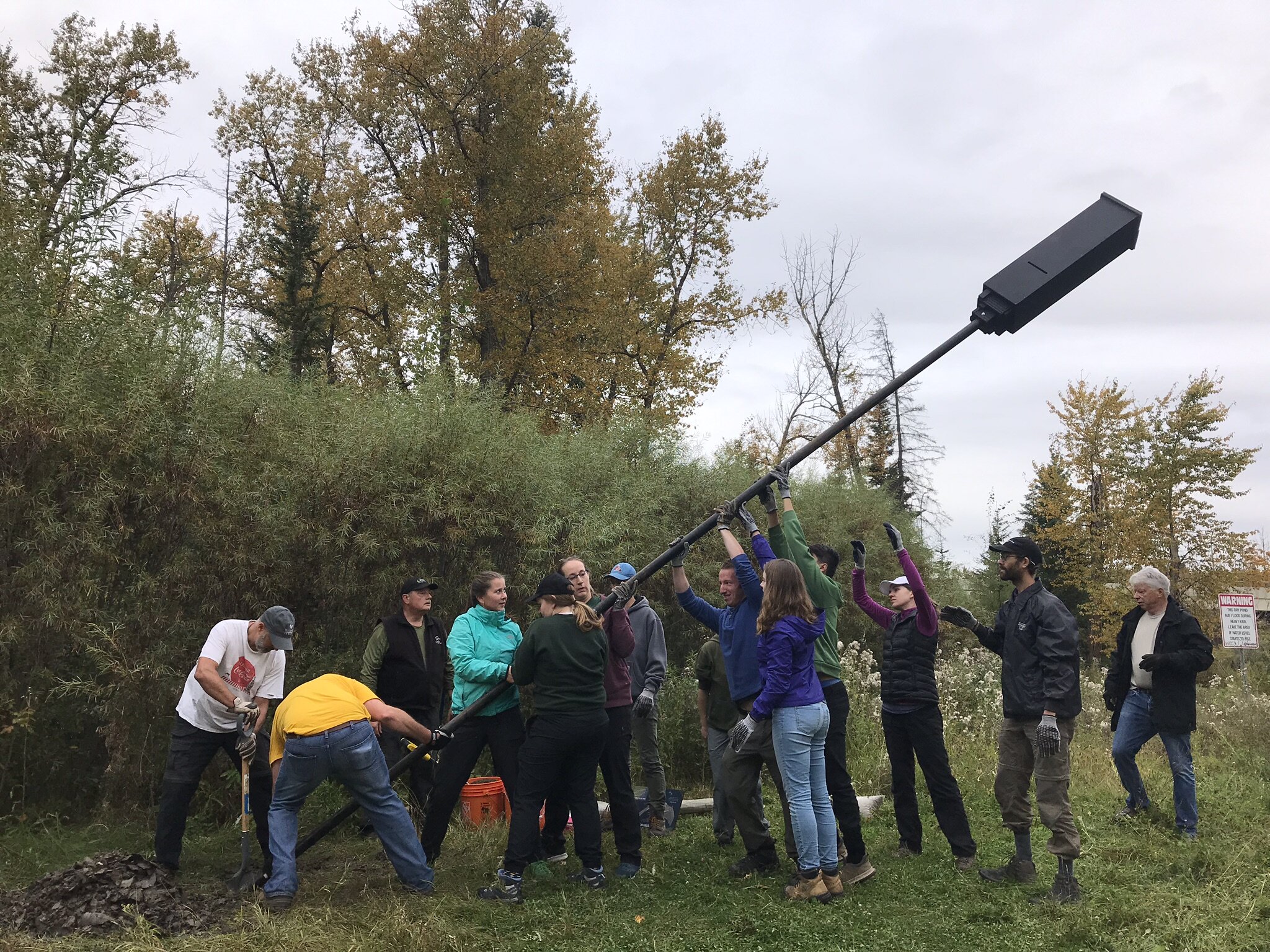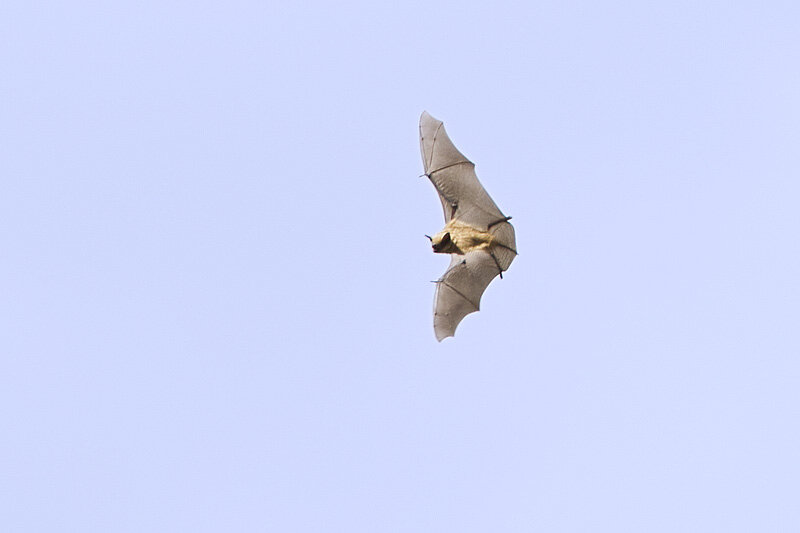If you have been following us lately, you might know that we are all about bats! We are still going batty, and just this fall, we installed a rocket bat box at Larch Sanctuary. Read on to learn more about this bat box, and why we installed it!
Where?
Larch Sanctuary is currently is our only conservation land within city limits, and while the City of Edmonton owns Larch Sanctuary, EALT has a Conservation Easement on the land, which helps conserve it by restricting the activities that take place there.
Who?
In fall of 2019, we installed a rocket bat box at Larch Sanctuary. Volunteers and donors are what made it happen – as a small non-profit, we rely on help to achieve our conservation goals. Three groups were critical to the success of this installation – the support of the City of Edmonton, funding from Lafarge, and the volunteers who helped us do the installation. EALT staff established Larch Sanctuary as a Conservation Easement in 2017, and staff worked with the City of Edmonton to finalize all the paperwork for the installation of a bat box in fall 2018. Lafarge stepped in to provide funding for materials, equipment rental, and other costs, and they sent a representative to assist in the installation of the box as well. Finally, volunteers were needed to place the box itself – a 21 foot metal pole and 4 foot high multi chambered bat box are pretty heavy!
Why install a bat box?
Bats are affected by many changes to our landscape and habitat, but the biggest threat they face is called White-nosed fungus. There is currently no cure for this fungus, which affects hibernating bats and can kill off most to all of every population it encounters. You can read more about the impacts of this fungus here. Bat boxes do not address white-nose fungus, but they provide artificial habitat in a landscape where natural habitat is being lost, which reduces stresses facing our vulnerable bat populations.
Why here?
Photo credit: Gerald Romanchuk
Despite the dangers of this fungus, many people remain misinformed about bats, and the issues they face. The bat box has two purposes – providing safe habitat for a whole colony of roosting bats, and to educate the public about our bats and how to help them. Larch Sanctuary is within Edmonton’s river valley, where bats already live, but surrounded by urban areas where their habitat has been lost. With this box, there is now additional space for a colony of bats to establish in this small but interconnected patch of nature. The box is placed high off the ground, so there is space for the bats to enter and exit, and it is very close to Whitemud Creek – essential for bats to drink and to find water loving insects to eat.
Why this box?
Rocket bat boxes are a type of maternity box designed to support a colony of up to 350 bats! Maternity, or nursery boxes, are the most valuable because when natural habitat is lost, because the most difficult habitat to replace is large old dead trees with enough space to support an entire colony. Rocket bat boxes are also effective habitat because they are multichambered boxes – over time, scientists have found that boxes with only one chamber can be dangerous for bats if they overheat. A multichambered box allows bats to move from a chamber that is too hot to one that is cooler.
What else can I do?
If you can’t put up a bat box right now, never fear! There is lots that you can do to help bats:
Leave old dead trees standing. These provide natural cavities for bats to live in.
Don’t persecute bats – if you don’t want them in a building, there are ways to exclude them without harming them. Check out the Alberta Community Bat Program’s website for ideas.
Reduce your use of pesticides. Bats in Alberta and Canada eat exclusively insects. This is a bonus for our forest and agricultural crops, but when we spray too much pesticides, we harm these natural predators of insects!
Support habitat conservation - support organizations like EALT by volunteering and donating! We can always use your support to protect bats, and all plants and wildlife into the future.
Thank you for reading! Don’t forget to follow our blog for more interesting updates.







